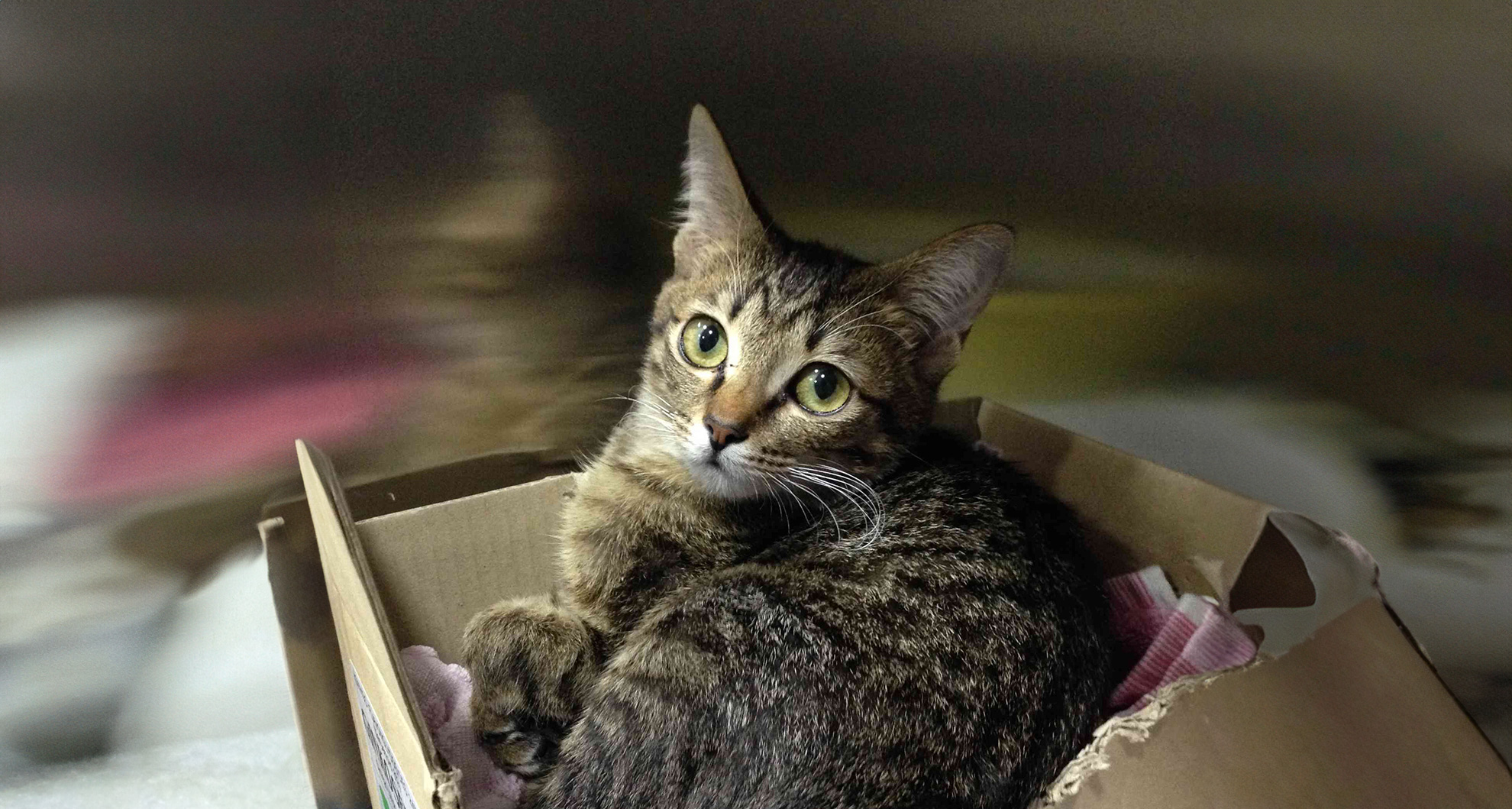FIV and FeLV



How do cats get infected with FIV or FeLV?
The FeLV virus is typically spread from close contact – via saliva and nasal secretions, grooming, shared food bowls, bites. Unlike FeLV, the FIV virus is usually only spread through deep bite wounds. Both viruses can be transmitted from an infected mother cat to her kittens in utero and from nursing.
Signs of FIV and FeLV are similar
- Poor appetite and weight loss
- Diarrhoea and vomiting
- Lethargy
- Eye diseases
- Dental diseases
- Respiratory infections
- Poor coat condition
- Skin infections
To find out if your cat has FeLV, your vet can run an ELISA test. A positive result means the virus is circulating in the cats’ blood but it is possible for them to fight off the infection. Kittens who contract FeLV often go on to develop Feline Infectious Peritonitis (FIP) which is potentially fatal in young, immune-compromised cats.
The most common screening test for FIV is an ELISA test to look for antibodies made by the cat in response to FIV infection. A cat can test positive 2 to 4 weeks after exposure. Kittens may test positive after receiving antibodies from their mothers so they should be retested at around six months old. Vaccines are available for FIV and FeLV. Discuss with your vet about the efficacy and side effects.
Multi-cat households
- FIV-positive and FIV-negative cats can live in the same household if they get along and there is no fighting resulting in bite wounds.
- FeLV-positive and FeLV-negative cats should not have contact with one another.
- Keep your cats indoors to prevent them from contracting or spreading FIV and FeLV.
Although there is no cure for FeLV or FIV, infected cats can live normal lives if they are kept indoors, given good nutrition and care, and treated immediately for any illnesses that arise. New cats coming in the household should be tested for FIV and FeLV.
How do cats get infected with FIV or FeLV?
The FeLV virus is typically spread from close contact – via saliva and nasal secretions, grooming, shared food bowls, bites. Unlike FeLV, the FIV virus is usually only spread through deep bite wounds. Both viruses can be transmitted from an infected mother cat to her kittens in utero and from nursing.
Signs of FIV and FeLV are similar
- Poor appetite and weight loss
- Diarrhoea and vomiting
- Lethargy
- Eye diseases
- Dental diseases
- Respiratory infections
- Poor coat condition
- Skin infections
To find out if your cat has FeLV, your vet can run an ELISA test. A positive result means the virus is circulating in the cats’ blood but it is possible for them to fight off the infection. Kittens who contract FeLV often go on to develop Feline Infectious Peritonitis (FIP) which is potentially fatal in young, immune-compromised cats.
The most common screening test for FIV is an ELISA test to look for antibodies made by the cat in response to FIV infection. A cat can test positive 2 to 4 weeks after exposure. Kittens may test positive after receiving antibodies from their mothers so they should be retested at around six months old. Vaccines are available for FIV and FeLV. Discuss with your vet about the efficacy and side effects.
Multi-cat households
- FIV-positive and FIV-negative cats can live in the same household if they get along and there is no fighting resulting in bite wounds.
- FeLV-positive and FeLV-negative cats should not have contact with one another.
- Keep your cats indoors to prevent them from contracting or spreading FIV and FeLV.
Although there is no cure for FeLV or FIV, infected cats can live normal lives if they are kept indoors, given good nutrition and care, and treated immediately for any illnesses that arise. New cats coming in the household should be tested for FIV and FeLV.
How do cats get infected with FIV or FeLV?
The FeLV virus is typically spread from close contact – via saliva and nasal secretions, grooming, shared food bowls, bites. Unlike FeLV, the FIV virus is usually only spread through deep bite wounds. Both viruses can be transmitted from an infected mother cat to her kittens in utero and from nursing.
Signs of FIV and FeLV are similar
- Poor appetite and weight loss
- Diarrhoea and vomiting
- Lethargy
- Eye diseases
- Dental diseases
- Respiratory infections
- Poor coat condition
- Skin infections
To find out if your cat has FeLV, your vet can run an ELISA test. A positive result means the virus is circulating in the cats’ blood but it is possible for them to fight off the infection. Kittens who contract FeLV often go on to develop Feline Infectious Peritonitis (FIP) which is potentially fatal in young, immune-compromised cats.
The most common screening test for FIV is an ELISA test to look for antibodies made by the cat in response to FIV infection. A cat can test positive 2 to 4 weeks after exposure. Kittens may test positive after receiving antibodies from their mothers so they should be retested at around six months old. Vaccines are available for FIV and FeLV. Discuss with your vet about the efficacy and side effects.
Multi-cat households
- FIV-positive and FIV-negative cats can live in the same household if they get along and there is no fighting resulting in bite wounds.
- FeLV-positive and FeLV-negative cats should not have contact with one another.
- Keep your cats indoors to prevent them from contracting or spreading FIV and FeLV.
Although there is no cure for FeLV or FIV, infected cats can live normal lives if they are kept indoors, given good nutrition and care, and treated immediately for any illnesses that arise. New cats coming in the household should be tested for FIV and FeLV.